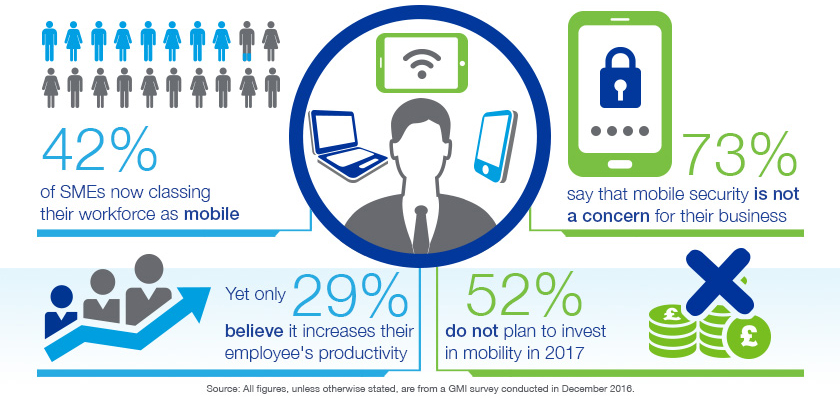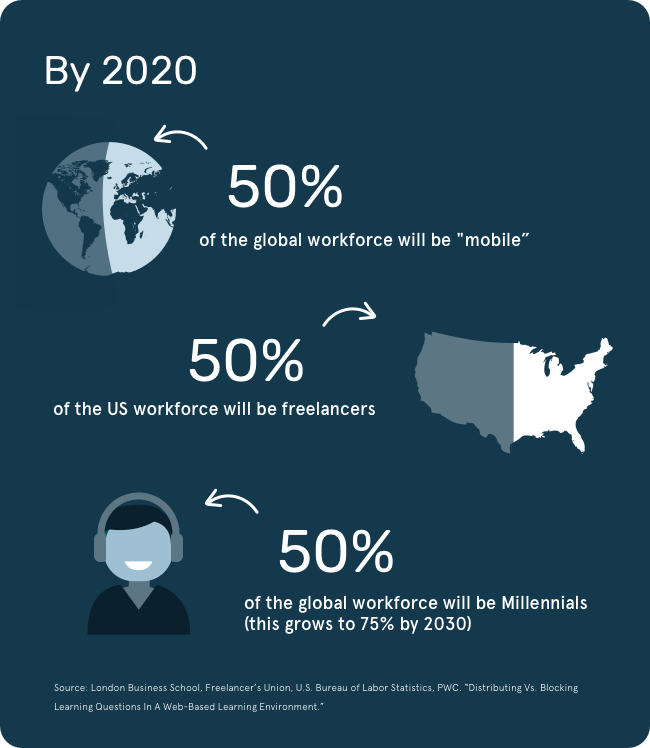The future workplace
Whilst I often focus on developments and improvements to a businesses operating model, or its approach to technology, or maybe how to leverage the most from a tool or methodology, it’s almost always done with the primary benefactor being the business itself. What can be easy to forget is how to manage the business of people, and what can be done to improve enhance and importantly protect them from all the bad bits of rapid scale Organisational change. Have you thought about how change impacts groups of people in your business?
Overwhelmed by ever-increasing workload, increased job demands (often through badly deployed Enteprise Agility programmes) lack of feedback or recognition or a loss of faith in the leadership team, Studies by Stress.org cite;
- 46% of people say workload is a current issue for them
- 28% say people issues cause their biggest stress
- 20% are busy juggling personal commitments with their work lives
- 6% are dealing with the issues around job security.
a stressed-out workforce is not good for anyone. Companies are ever increasingly paying more attention to employee wellness & leveraging all the benefits it can bring. Considering wellness, Employee engagement & satisfaction are now new metrics a business can be judged and defined by its important to understand what you could focus on to help develop a solid culture in your business;
Here are some ways in which managers can help prevent burnout amongst their teams.
Encourage Physical Activity & Implement a Wellness Programme.
At the firm I work for, ISG, we have added a competitive element to exercise and getting everyone involved in a walking challenge to hit a certain amount of steps, gamifying it using software such as HealthTrails https://www.hesonline.com/products/healthtrails/ means staff get fit, stay fit & also work together to become aware of the importance of exercise if they don’t already value it. More generally, companies I’ve worked with such as http://workwisewellness.co.uk/ help employee’s stay on a path of emotional and physical well being which benefits both the company they work for and ultimately themselves.
Provide functional equipment
Grumpy tired staff bashing at a keyboard of a non-responsive laptop or raising ticket after ticket to your helpdesk because they can’t access a resource due to an IT mis-configuration? Sound familiar? Frustration with equipment can be a major sign of burnout, solving this problem alleviates work-related stressors tremendously. Provide your team with appropriate equipment properly configured.
Celebrate Success
Every employee wants to feel needed. Often, unexpected pat’s on the back or genuine acknowledgment of good work can go a long way. Ensure you build out feedback loops that are more frequent that a six month or annual review. By ensuring staff feel listened to, heard, and their efforts are rewarded, they’ll be more likely to repeat that behavior again. That brings us neatly onto…
Give them a voice
People need to be heard. Employee’s who feel they have no say in their organization’s decision making, burnout is often a natural consequence. Getting out their way and letting them get on with their job also helps tremendously. Utilizing collaboration tools such as Asana, Yammer! And others really help drive a tribe mentality and encourage conversation.
Understand the Tribal mentality of the human Psyche
One of the six core human needs is certainty. Everybody needs to feel certain, have clarity and assurances so we know everything will be ok. Organisational Change threatens that, and therefore can encourage resistance. Some points to remember when it comes to the human element of OC;
- The soft skills needed for successful OC are really hard to learn
- You must draw people into the change journey, no one likes having change imposed on them
- Be sensitive to people’s identities within the workplace, and within their teams and how change challenges that
- Understand the potential threats from human behavior, and address those accordingly.
The future workplace
From the first office built in 1648 setting a template of how offices should be, the rapid development of both technology & cultural change in the workforce has radically shaped businesses now, and their evolution as we move forward.

Organisations are on the look out for ever-increasing ways to leverage technology to become leaner, faster and more profitable. Home working is on the rise, with over 70% of people around the world working remotely at least once a week. Billion-dollar companies exist without offices at all, and in a lot of cases, without email either!
Email is on the out.
According to the Workfront 2018 state of work report, US workers are spending only 40% of their workday on primary tasks, with the rest being taken up by handling email. Tech including chatbots are changing the way the workforce spend time throughout their day leading to huge efficiency increases.
Workers also now need to cope with increased need to interact with AI, lots of job re-engineering (see Organisational change above) and the need to find new ways of maintaining human connection in a world seemingly set to keep us all at home, in front of a screen and ‘collaborating’ through Skype.
Here are some workplace trends you should keep an eye on;
AI Interaction
You interact with AI on a daily basis without even knowing. That YouTube video you’ve just watched, and that laser-accurate ‘watch next’ list, comes from leveraging big data and algorhymicly led AI to offer up your next video. Your mobile phone surfacing content and apps at just the right time, your Google assistant providing you with contextual weather information based on where you are, or live traffic status from your work to home at just the right time – all AI.
Workers of the future are going to need to become used to AI assisting them not only with their job, but providing data-led feedback on performance, personal development and coaching too! Businesses can start now with building innovation councils including switched on people from HR, IT, and other core areas that represent your business, culture and people.
Many companies today are missing the real opportunity to leverage technological advancements: many are looking to AI and other technologies only to speed up or increase accuracy in existing mechanical processes, instead of thinking about how innovative new tech can bring about huge improvements in the way we work now, and well into the future. In his visionary 1990 Harvard Business Review article, Michael Hammer explains the current dynamic:
It is time to stop paving the cow paths. Instead of embedding outdated processes in silicon and software, we should obliterate them and start over. We should ‘reengineer’ our businesses: use the power of modern information technology to radically redesign our business processes in order to achieve dramatic improvements in their performance.”
Communications
Instant messaging throughout the organisation can often also be a huge time killer. It can get in the way of employee’s doing the work they were hired to do. With thanks to chatbots with AI baked in making their debuts in offices across the land, soon employee’s will be able to rely on them to take care of the more simple tasks so they can focus on their day job.
Imagine how much more teams could be if a chatbot could be used to communicate information to co-workers, share project status updates and manage document shares and To Do lists.
Data is the new oil
With the relatively new field of deep learning, in essence refining petabyte after petabyte of unrefined data turning it into something more useful, data continues to be the number 1 biggest growing trend in business in relation to ROI. Facebook classically uses in-timeline games such as #tenyearchallenge to entice people to upload pictures of themselves now, and from ten years ago. It then takes this data to help shape and educate algorithms of the future for face recognition platforms and then sells this data on. Google for years has been using those photos you uploaded into Picassa to train its facial recognition systems. And it’s mapping data is now sold to military companies to make their missile platforms more accurate. In the workspace, big data allows trend analysis for marketing, decision making & even more complex tasks such as IT network management. Low cost tools allow businesses to ‘roll their own’ solutions whether that’s chatbot implementation, big data platforms such as Hadoop are readily available and of course, the ever-increasing amount of compute availability at the push of a button.
Email? No thanks
As email decreases with work collaboration platforms such as Azure DevOps, Trello, Basecamp, Asana get adopted, alongside chatbots and more readily available data, employee’s will be able to spend more of their time innovating and ‘rolling their own’. We’re already seeing this shift. The State of Work report has found that 44% of US workers whilst who acknowledge automation has taken some of their job away, it has then free’d them up to add value to their companies in other ways, more strategic work and in turn help increased that bottom line.

Top Trend 1 – Open by default
IM technology such as Slack, Lync and other real time communication tools break down organisational silo’s and people often now expect to be able to communicate in channels other than email. Information is open and shared more than it ever has been before, and your business culture will need to support it or you can expect break off silo’s of communication between teams. I’ve seen this at a big Global, with all the technies running a Slack channel slagging the company off! Being open is a top way to attract talent not the top down culture of the past. Make the organisation come alive!
Top Trend 2 – Mobile first and fully automated
Workers are glued to their phones and current mobile statistics speak for themselves; with 71% of time spent online in the US happening on mobile, (61% in the UK) mobile penetration is at 85% in Europe. Organisations need to accommodate the mobile workforce and mobile generally. Automation weaves it’s way into this landscape also and the ability to run bots from mobile devices to help out with menial and repetitive tasks is a big desire.
Top Trend 3 – Multi-Modal
Video is ever increasingly effective, as we’ve moved from the written word and email to video, memes, and GIFs all having their role to play. Revolut use a nice touch allowing you to send a GIF as part of your payment – little touch but makes things personable. Ultimately as the volume of information at work grows, video continues to be able to cut through it nicely. I use video all the time to narrate my decks, and provide project management updates to my team. It’s simple, but it works.
Top Trend 4 – Connected & Integrated
People want to utilize their own tool-set to get the job done and not always have software forced upon them. A ‘best of breed’ approach to software is one which will be predominant in the workplace of the future. Nothing worse than not being able to open a file from another team because they are using different software.
Linking in with the mobile workforce, the static desktop-based way of working no longer reflects reality. A study by Upwork and Freelancers Union concluded that by 2020, 50% of the US workforce will be freelancers with no fixed “place” of work. Organisations are going to need to be able to accommodate these differing archetypes, ensuring onboarding and offboarding teams, giving remote workers voices and ensuring proper collaboration occurs regardless of location is baked into their DNA.

Leveraging the future workplace
No matter what the technology, the biggest trend to watch is people’s adoption of technology and process. Organisations who leverage not only technology, but accommodate humans basic needs such as to feel connected, to work flexibly and to be autonomous will win big. Leveraging low cost tools to enable your workforce and save costs on otherwise expensive technology implementations by rolling your own is all within a companies grasp. Low cost cloud computing, Big data platforms and no-code chatbots can be spun up quickly and with little technical Expertise.
It’s exciting. Get in touch with me if you’d like to talk about any of the above. I’m talking about the future of the workplace at London Olympia 24/25th April. Come and have a coffee with me there.




